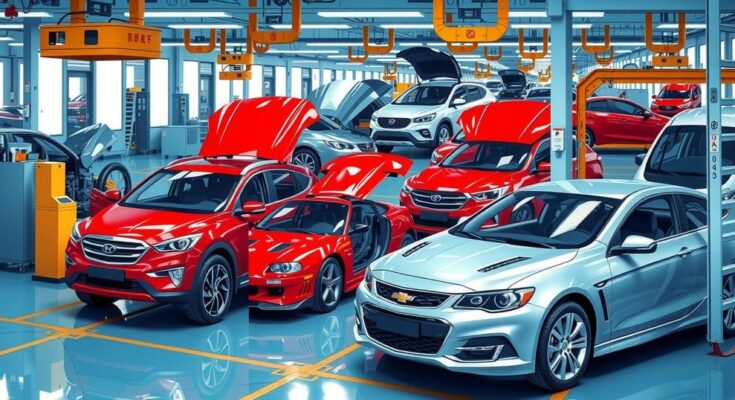Uzbekistan’s auto industry, historically dominated by Chevrolet, faces a transformative shift as electric vehicles from Chinese manufacturers enter the market. Under President Mirziyoyev, foreign investments have surged, with partnerships in EV production leading to increased options for consumers. Despite Chevrolet’s stronghold in the market, changing consumer preferences and improving infrastructure suggest a growing acceptance of electric vehicles.
Uzbekistan remains dominated by Chevrolet vehicles, where approximately 90% of cars are Chevrolets, with an overwhelming 80% in white. However, this longstanding supremacy is being challenged as electric vehicles (EVs) gain traction globally, particularly from Chinese manufacturers now eyeing Uzbekistan’s market.
The foundation of Uzbekistan’s automotive industry was laid in 1996 with a partnership between the government and South Korea’s Daewoo. Following the 1998 financial crisis and the acquisition by General Motors in 2002, the production of Daewoo vehicles continued under the Chevrolet brand, limiting consumer choice but providing job stability and industrial development.
Under President Shavkat Mirziyoyev’s leadership, a transportation market transformation commenced in 2017, encouraging foreign investment and the introduction of brands such as Kia, Hyundai, BYD, and Changan. The removal of tariffs on EVs in 2019 further stimulated car manufacturing, with UzAuto Motors collaborating with BYD to open a factory in Jizzakh expected to produce 50,000 vehicles annually.
Nevertheless, in Andijan, Chevrolets have not fully relinquished their stronghold, with 95.5% of surveyed cars being Chevrolet. Alisher noted the higher costs associated with electric vehicles, including maintenance and repair, as critical deterrents among consumers. The extensive availability of spare parts and familiarity with Chevrolet repairs contribute to its sustained dominance.
Changes are evident, as increasing sales indicate a gradual shift toward EVs, with importers like Runking Motor Group expressing confidence in this trend. Farkhodjon Israilov cites the emergence of mechanics capable of servicing EVs as a sign of adaptation. Furthermore, the affordability of Chinese EVs is anticipated to improve, with predictions of prices dropping below $15,000 due to economies of scale.
Although the government has introduced non-tariff barriers to address the growing number of imports, the rapid advancement of Chinese EV production makes it challenging to maintain competitive advantages. Shukurov expressed that the pace of Chinese industrialization will inevitably enhance their market presence. Chevrolet, adapting to these competitive pressures, has begun lowering prices and offering discounts for the first time in Uzbekistan, indicative of a shifting market landscape.
The automotive landscape in Uzbekistan is undergoing significant change, shifting from a Chevrolet-dominated market to one increasingly influenced by electric vehicles, particularly from Chinese manufacturers. The gradual adaptation by consumers and the local market to accommodate EVs marks a pivotal movement towards diversification. With government policies and increased competition driving innovations, the future of Uzbekistan’s automotive industry looks set for further transformations.
Original Source: timesca.com




